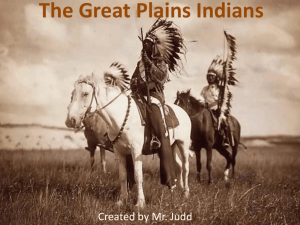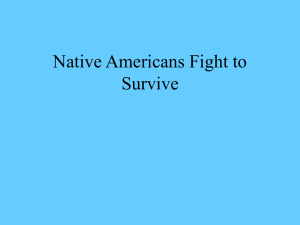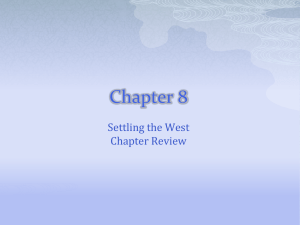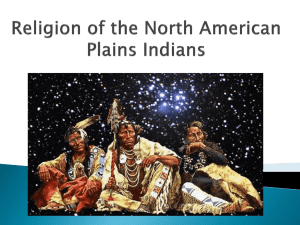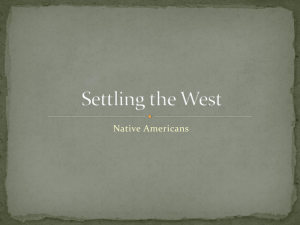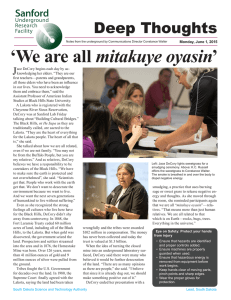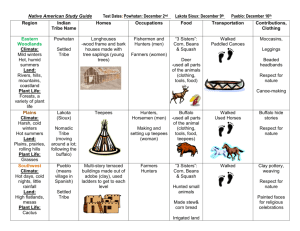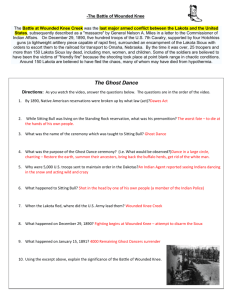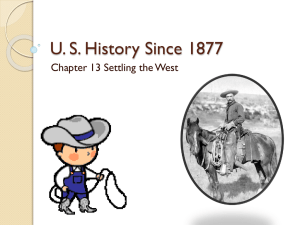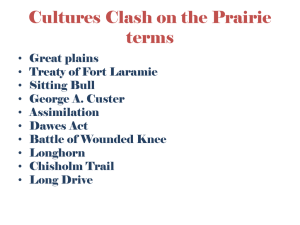Great Plains Indians - Streetsboro City Schools
advertisement
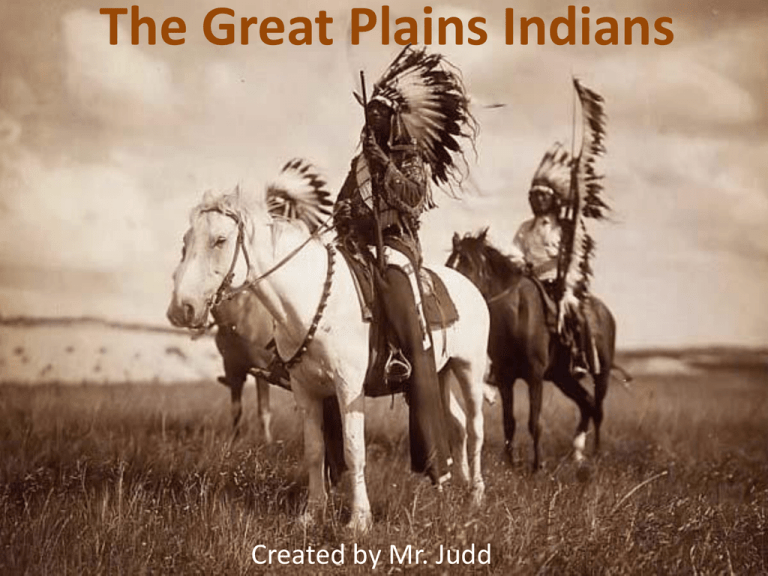
The Great Plains Indians Created by Mr. Judd For centuries the Great Plains were home to many groups of Native Americans. Some lived in communities as farmers and hunters, but many were nomads who roamed vast distances, following their main source of food– the buffalo. When ranchers, miners, and farmers moved to the Plains depriving the Native Americans of their hunting grounds, the Plains Indians resisted by attacking wagon trains, stagecoaches, and ranches. Occasionally, tribes were asked to relocate to new territories or even reservations. When they refused, war erupted on the Plains. In 1864, Colonel John Chivington attacked and killed several hundred Cheyenne Indians in eastern Colorado. An event known as the Sand Creek Massacre. In 1876 prospectors overran the Lakota Sioux reservation in the Dakota Territory to mine gold in the Black Hills. When the Sioux refused to leave their traditional hunting lands in the Black Hills, the government sent in the military. The stage was set for a big showdown between the Native Americans and government troops. On June 25, 1876, Sioux and Cheyenne warriors routed Gen. George Custer and 210 soldiers of the 7th Calvary by killing them all. Chief Sitting Bull Gen. George Custer Mount Rushmore is located in the Black Hills of South Dakota. Crazy Horse Memorial–Black Hills, South Dakota Flight of the Nez Perce In 1877, the Nez Perce people led by Chief Joseph, refused to move to a smaller reservation in Idaho. When the army came to relocate them, they fled their homes and embarked on a journey of more than 1300 miles. Finally, after three months and several battles, the Nez Perce were forced to surrender 40 miles from the Canadian border. “Our chiefs are killed….The little children are freezing to death. My people….have no blankets, no food…. Hear me, my chiefs; I am tired; my heart is sick and sad. From where the sun now stands I will fight no more forever.” --Chief Joseph surrendering to General Oliver Howard at Bear Paw Mountain, MT in 1877 Chief Joseph Ghost Dance Out of desperation, many Native Americans found hope in the Ghost Dance. They believed the dance would make settlers disappear, buffalo return, and that Native Americans would reunite with their dead ancestors. Fearing violence, federal authorities banned the ceremonial dance in the 1880’s. Tragedy at Wounded Knee Burial Party Slaughtered Lakota Sioux 7th Cavalry Hotchiss Gun Chief Big Foot Frozen to Death When a group of Lakota Ghost Dancers fled the reservation to dance in Dec. 1890, the U.S. Government sent troops to Wounded Knee Creek (South Dakota) to round them up. A deadly “battle” ensued where approximately 200 Lakota men, women and children were killed. The Dawes Act 1887 Dawes Act or General Allotment Act,1887, passed by the U.S. Congress to provide for the granting of landholdings (allotments, usually 160 acres/65 hectares) to individual Native Americans, replacing communal tribal holdings. …Allotments could be sold after a statutory period (25 years), and “surplus” land not allotted was opened to settlers. The Dawes Act was an attempt to assimilate, or absorb, Native Americans into American society by offering them a chance to be landowners. This meant dividing reservations into individual allotments where families could be self-supporting. Failure of the Dawes Act Navaho Tom Torlino Before After In the end, the assimilation policy proved a dismal failure. The Native Americans were doomed because they were dependent on buffalo for food, clothing, fuel, and shelter. When the herds were wiped out, Native Americans on the Plains had no way to sustain their way of life, and few adopted American settler’s lifestyles in place of their traditional cultures.
